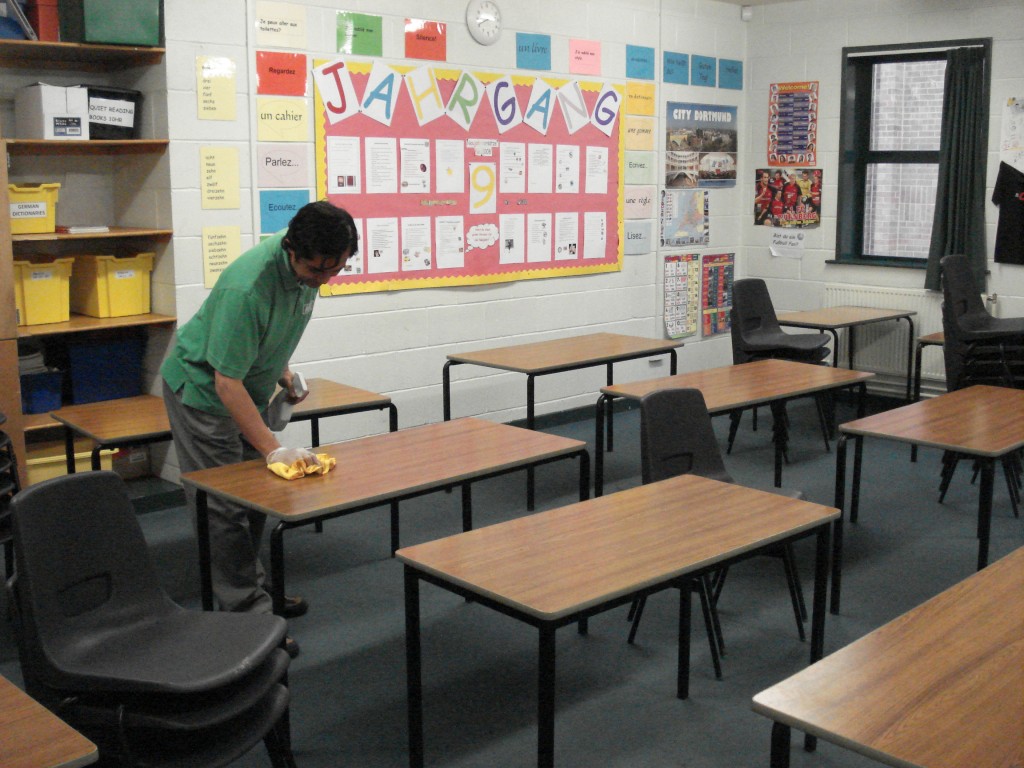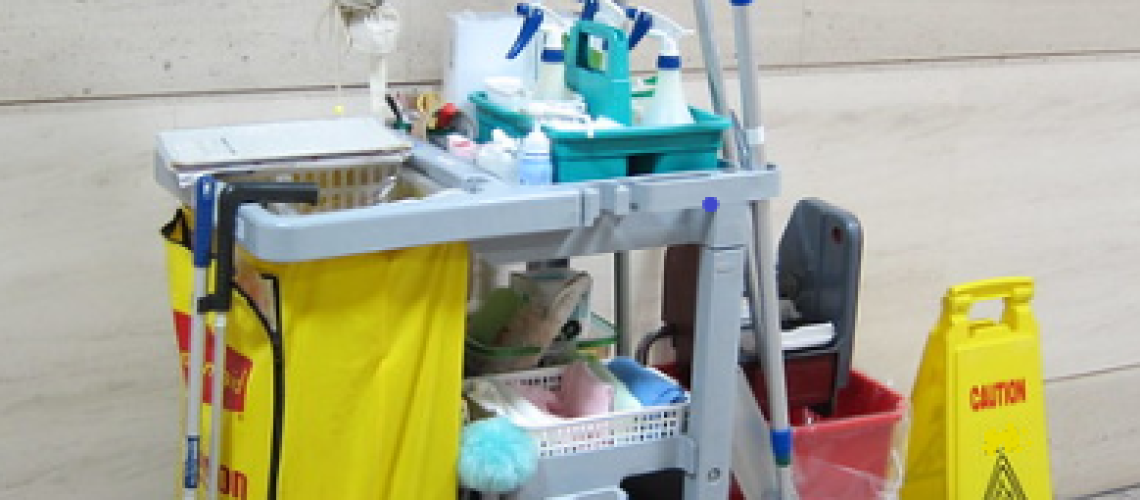Keeping a school clean isn’t just about appearances — it’s essential for the health, safety, and wellbeing of students and staff. Clean classrooms create a better learning environment, reduce the spread of illness, and promote responsibility among students. Whether you’re a school administrator, site manager, or headteacher, following a structured approach to school cleaning can make a huge difference. And for the tasks that require more time and precision, partnering with trusted professionals ensures your school stays spotless, safe, and compliant.
Here are 10 practical ways to keep your school clean every day:
1. Set Daily Cleaning Routines
Every successful cleaning strategy starts with consistency. Establishing a daily cleaning schedule for classrooms, corridors, staff rooms, and toilets helps prevent dirt and clutter from piling up. Daily routines should include sweeping and mopping floors, emptying bins, wiping down desks, and disinfecting high-touch areas. By assigning responsibilities and sticking to a routine, cleanliness becomes part of the school’s daily rhythm.
2. Prioritise High-Touch Surfaces
In any school, certain surfaces see more contact than others — door handles, light switches, handrails, keyboards, and desk surfaces, to name a few. These spots are magnets for bacteria and viruses. To reduce the risk of cross-contamination, these areas should be disinfected multiple times a day, especially during cold and flu season. Using hospital-grade, child-safe cleaning products is essential, particularly in nurseries and primary schools.

3. Provide Accessible Bins and Recycling Stations
If rubbish bins are hard to find, students are more likely to leave waste behind. That’s why it’s important to have clearly marked bins in every classroom, hallway, cafeteria, and outdoor area. Encouraging recycling with colour-coded bins and simple instructions can make a noticeable difference. Proper signage and frequent emptying help prevent unpleasant smells and deter pests.
4. Train Staff and Students on Hygiene Etiquette
School cleaning isn’t just the responsibility of the caretaking staff — it’s a community effort. Promoting good hygiene practices through posters, announcements, and short educational sessions goes a long way. Students should be encouraged to wash their hands regularly, especially before eating. Teaching them to sneeze or cough into their elbow, dispose of rubbish properly, and clean up after themselves helps build lifelong habits that contribute to a cleaner environment.
5. Deep Clean Classrooms Weekly
While daily cleaning handles the basics, a weekly deep clean is essential for maintaining long-term hygiene. This includes thoroughly dusting surfaces that are often overlooked, sanitising shared equipment, scrubbing floors, and cleaning hard-to-reach corners. Deep cleaning resets the classroom and ensures that built-up dirt doesn’t become a problem. Many schools opt to hire a professional school cleaning service for this stage, ensuring high standards and saving time.
6. Keep Restrooms Stocked and Sanitised
Restrooms can quickly become unhygienic if not monitored and maintained regularly. In a busy school environment, toilets must be cleaned multiple times throughout the day. Floors should be mopped, surfaces disinfected, and sinks kept clear and dry. Just as important is ensuring that soap, toilet paper, and paper towels are always stocked. Clean and functional restrooms show students that hygiene matters and set a standard for behaviour throughout the school.
7. Encourage a Clean-as-You-Go Mindset
Creating a culture of responsibility helps maintain a consistently clean environment. When students and staff take ownership of their spaces, it eases the burden on caretakers and contributes to a more pleasant learning atmosphere. Teachers can lead by example by keeping classrooms tidy and encouraging students to clean up after themselves. Even small habits — like pushing in chairs, clearing desks, and putting away supplies — can make a big difference over time.
8. Keep Outdoor Areas Tidy
The exterior of a school is just as important as the inside. Playgrounds, sports fields, entrances, and walkways should be kept clean and free of litter. Leaves, debris, and rubbish should be cleared regularly to prevent hazards and maintain a positive image. Outdoor bins should be placed in convenient locations and emptied often. Encouraging students to respect their surroundings outside the classroom fosters a greater sense of school pride.
9. Monitor Cafeterias and Food Zones
Food areas can become messy quickly, especially during busy lunch periods. Crumbs, spills, and discarded packaging are common and can attract pests if not addressed promptly. Regular cleaning during and after lunch breaks is essential, as is setting clear expectations around food disposal and table etiquette. Encouraging students to clean their eating spaces after use helps reinforce good habits and supports a cleaner, more hygienic environment for everyone.
10. Hire Professional School Cleaning Services
While internal staff can manage much of the day-to-day upkeep, bringing in professional cleaning services ensures a higher standard of hygiene. Trained cleaners use specialised equipment and follow industry best practices to carry out deep cleans, tackle high-traffic areas, and meet safety and compliance standards. Outsourcing school cleaning tasks also frees up school staff to focus on their core responsibilities, making it a smart and efficient choice for long-term maintenance.
Maintaining a clean school is a shared responsibility that benefits everyone — from students and teachers to parents and the wider community. By implementing daily routines, encouraging good hygiene habits, and investing in professional cleaning support when needed, schools can create safer, healthier, and more productive environments for learning. Clean schools don’t just look better — they work better, helping students thrive both academically and personally. With consistency, cooperation, and care, keeping schools clean every day is not only achievable but essential.






